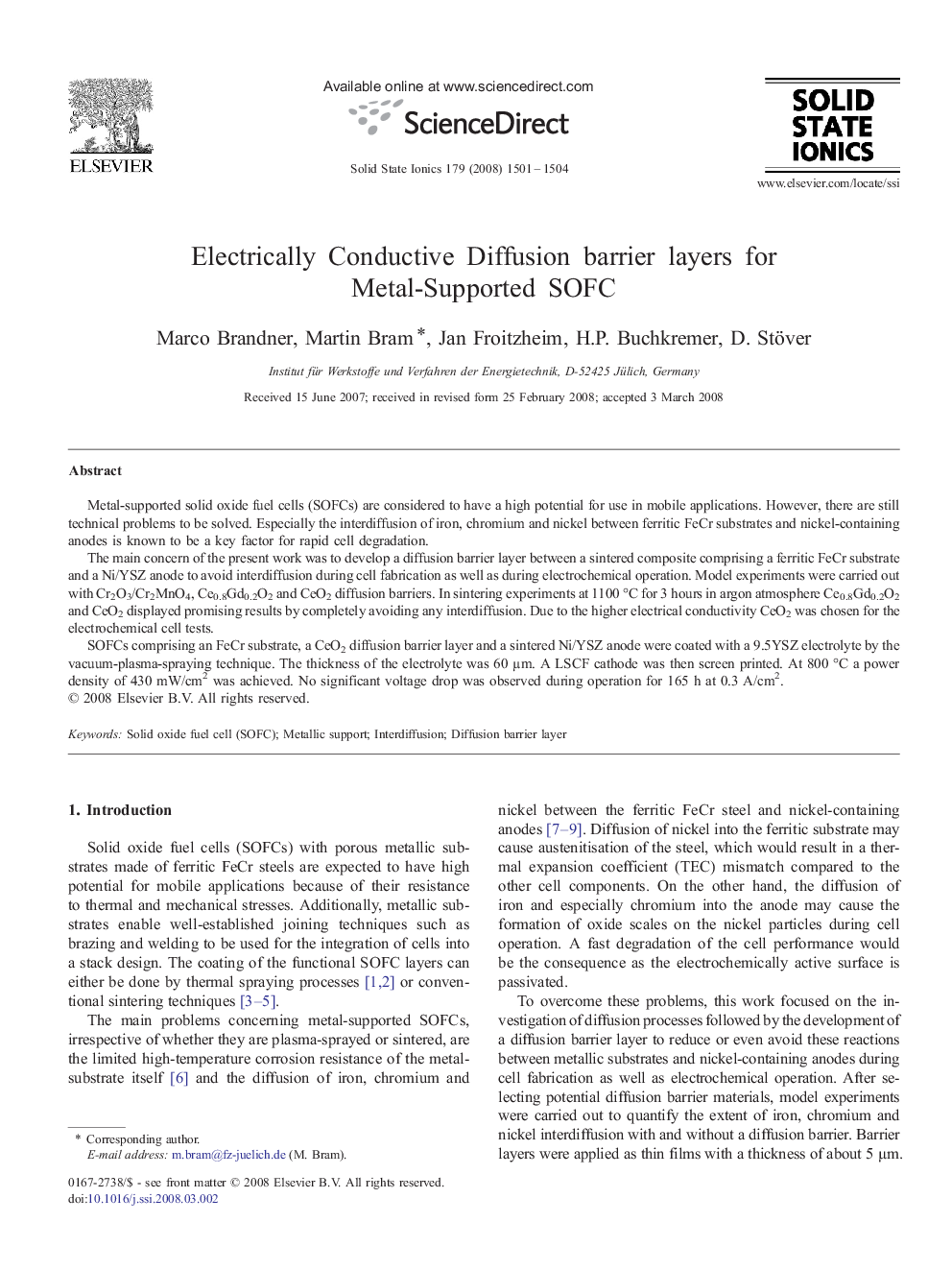| Article ID | Journal | Published Year | Pages | File Type |
|---|---|---|---|---|
| 1297149 | Solid State Ionics | 2008 | 4 Pages |
Metal-supported solid oxide fuel cells (SOFCs) are considered to have a high potential for use in mobile applications. However, there are still technical problems to be solved. Especially the interdiffusion of iron, chromium and nickel between ferritic FeCr substrates and nickel-containing anodes is known to be a key factor for rapid cell degradation.The main concern of the present work was to develop a diffusion barrier layer between a sintered composite comprising a ferritic FeCr substrate and a Ni/YSZ anode to avoid interdiffusion during cell fabrication as well as during electrochemical operation. Model experiments were carried out with Cr2O3/Cr2MnO4, Ce0.8Gd0.2O2 and CeO2 diffusion barriers. In sintering experiments at 1100 °C for 3 hours in argon atmosphere Ce0.8Gd0.2O2 and CeO2 displayed promising results by completely avoiding any interdiffusion. Due to the higher electrical conductivity CeO2 was chosen for the electrochemical cell tests.SOFCs comprising an FeCr substrate, a CeO2 diffusion barrier layer and a sintered Ni/YSZ anode were coated with a 9.5YSZ electrolyte by the vacuum-plasma-spraying technique. The thickness of the electrolyte was 60 µm. A LSCF cathode was then screen printed. At 800 °C a power density of 430 mW/cm2 was achieved. No significant voltage drop was observed during operation for 165 h at 0.3 A/cm2.
